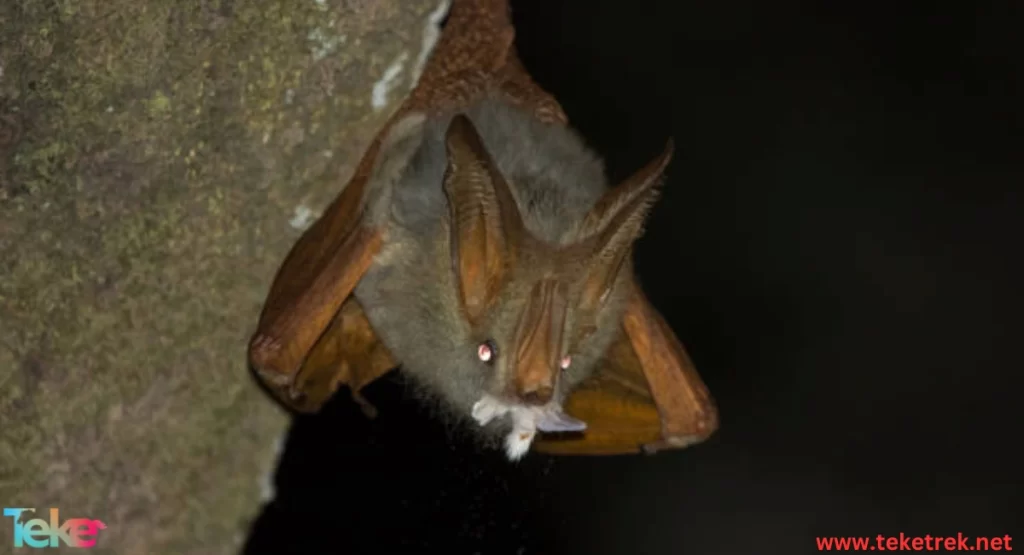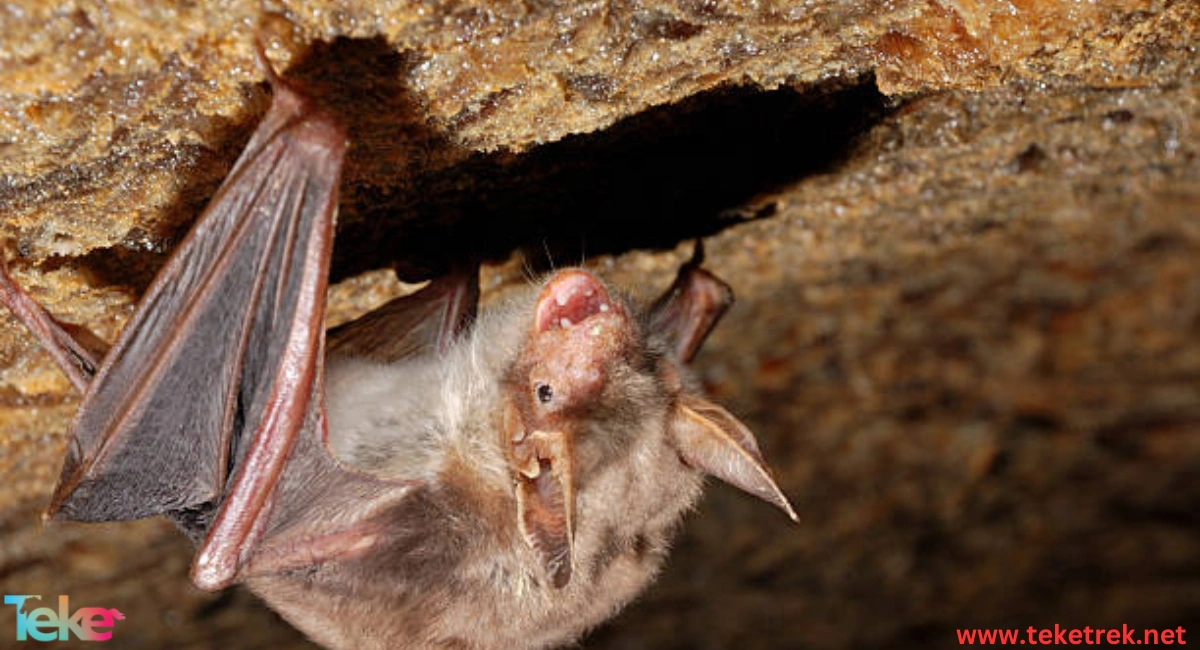The Desert Long-Eared Bat also known as the Balkan Long-Eared Bat, is a species of bat that belongs to the order Chiroptera, family Vespertilionidae, genus Otonycteris, class Mammalia, and phylum Chordata.
Its scientific name is Plecotus kolombatovici.
Let’s learn more about it from teketrek.
The Desert Long-Eared Bat specification
The desert long eared bat size: It has a medium-sized body.
The ear: long ears and a long tragus that equals half the length of the ear.
The fur: it is covered in dense and long fur, with the fur length reaching up to 1.1 millimeters.
The color: The back of the Desert Long-Eared Bat ranges from yellow to light brown, while its belly is white, the nose, wings, and ears are light brown in color.
The teeth: The Desert Long-Eared Bat has approximately 30 teeth
The length: its head and body length ranges from about 73 to 81 mm, with a tail length of 74 mm.
The weighs: It weighs around 18 to 20 grams.

The Desert Long-Eared Bat facts
Bats are nocturnal animals that can see in the dark but do not use their small eyes.
They locate objects using echolocation through the sounds they make.
While the Desert Long-Eared Bat typically lives alone, it generally tends to live in large colonies in caves.
The desert long-eared bat lives in large colonies, where it warms each other in a way that helps it conserve energy, and also maintains its body temperature individually by wrapping its wings around its body.
The Desert Long-Eared Bat is a very clean animal and spends a lot of time grooming itself, especially its ears.
The bat sleeps upside down for various reasons.
Firstly, the size of its wings prevents it from sleeping in a normal position.
Secondly, these creatures lack protection against predators, so they hang in hard-to-reach places.
One of the distinctive features of the Desert Long-Eared Bat is its long ears that are connected at their base, and during rest, the ears fold backward.
Bats are known for their ability to navigate and locate objects easily at night using a natural echolocation system similar to sonar.
Where do desert bats live
The Desert Long-Eared Bat inhabits rocky desert areas with sparse vegetation cover and dry regions.
It typically uses rock crevices and cracks in man-made structures as den.
Some of the countries where this type of bat is found include Saudi Arabia, United Arab Emirates, Egypt, Algeria, Morocco, Tunisia, Libya, Oman, as well as Qatar, Sudan, Palestine, Jordan, and Syria.
Desert long eared bat diet
The Desert Long-Eared Bat emerges after sunset, around 40 minutes later, and flies slowly over rocky terrains.
It is a carnivorous animal and prefers to feed on ground prey such as jerboas, winged termites, scorpions, spiders, and some flying insects.
The Desert Long-Eared Bat also feeds on small vertebrates, and it observes its prey while eating.
The Garter Snake: Fascinating Facts About This Common and Beneficial Reptile
Reproduction stages of the Desert Long-Eared Bat
The mating season for the Desert Long-Eared Bat starts from fall to April, and the gestation period lasts for about 16 weeks.
A female Desert Long-Eared Bat gives birth to one small bat at a time, which clings to its mother’s back until it is able to fly.
Additionally, the baby bat is born blind and hairless, and its mother places it in a pouch, then gives it access to one of her chest nipples where it clings with its claws.
The young bat remains in this position for about two weeks, and the mother carries it while flying. As it grows, it clings to her hind legs in a safe place while she flies out to get food, then she returns and places it back on her chest.
After about three months, the young bat begins to fly.

FAQs about the Desert Long-Eared Bat
- How long does the Desert Long-Eared Bat live?
The Desert Long-Eared Bat typically lives for about 5 years, but can exceptionally live up to 30 years. - What are the main predators of the Desert Long-Eared Bat?
Eagles, hawks, owls, snakes, as well as predatory animals like wildcats, foxes, and mongooses. In Africa, some of its species are preyed upon by humans. - What is the flight speed of the Desert Long-Eared Bat?
The flight speed of the Desert Long-Eared Bat is approximately 20 km/h. - What is the sound made by the Desert Long-Eared Bat called?
The sound made by the Desert Long-Eared Bat is called “wot,” which is a sharp sound somewhat resembling a whistle. - Are long-eared bats rare?
Grey long-eared bats are rare, medium-sized bats found only in a few locations in southern England. They are one of the two long-eared bat species in the UK..
In conclusion, The Desert Long-Eared Bat is important to emphasize the significance of this bat species and to ensure its protection and conservation efforts to prevent extinction.
References





